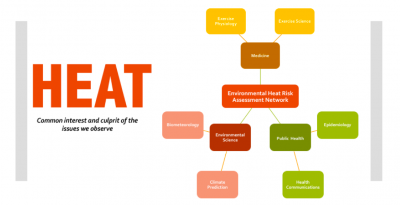By Amy Marturana
Chances are, you’ve been and felt dehydrated at some point in your life. Low energy, headache, and dry mouth are all common symptoms of mild dehydration, which is usually not dangerous—it’s most likely just going to make you feel a little uncomfortable until you drink more water to fix it. But when it comes to your workouts, being mildly to moderately dehydrated can negatively impact your performance in a few ways that you might not even realize.
Of course, the effects are much more serious for an elite athlete than an everyday exerciser, Douglas Casa, Ph.D., chief executive officer of the Korey Stringer Institute and research associate in the Human Performance Laboratory at the University of Connecticut, tells SELF. “The difference between first and tenth place is seconds. For a regular person, that difference is not as big of a deal. For an elite athlete, it could be their livelihood.”
Still, if you’re trying to shave some time off your next race, or want to feel your best during a workout (who doesn’t?), making sure you’re properly hydrated can help.
Here’s how being a little dehydrated can impact your workouts, and what you can do to fix it.
Our cells need water to synthesize energy. That’s especially important if you want to get through a tough workout.
The basic form of energy our muscles need to function is called adenosine triphosphate, or ATP. When we exercise, our bodies work to convert nutrients like carbohydrates and fat into ATP through both anaerobic (without oxygen) and aerobic (with oxygen) processes. We can only store a tiny amount of ATP in our cells, so our bodies are constantly synthesizing more to continue fueling our every movement. When you’re working out, the amount of energy your muscles needs increases, so synthesizing ATP is even more important.
While the food we eat is what’s broken down and converted to usable ATP, the process can’t happen without water, Greg Wells, Ph.D., assistant professor of kinesiology at the University of Toronto and author of The Ripple Effect: Eat, Sleep, Move and Think Better, tells SELF. One of the main systems in our bodies that creates ATP is called the citric acid cycle, or Kreb’s cycle. “If you’re dehydrated, the Kreb’s cycle cannot work properly to create energy,” Wells says. This can leave you feeling tired and fatigued (during your workout and in daily life).
When you have less fluid in your body, your heart has to work even harder to pump blood.
This means, ultimately, that you may feel like your cardiovascular system is working even harder (i.e. higher heart rate) than it should be. A workout that shouldn’t feel so intense has your heart pounding. Here’s why: “Your body needs some fluid to keep blood volume up to function,” exercise physiologist Mike T. Nelson, Ph.D., C.S.C.S., tells SELF. “Blood volume, which drives all pressure in the body, is primarily fluid based. If we start losing enough fluid, cardiac function is going to go awry.” When your blood volume drops, your heart has to beat faster to try and circulate the same amount of blood throughout your body.
Dehydration can also make it harder for you to regulate your body temperature.
When we exercise, several areas of our body fight for fluid, Casa says. “The skin is trying to cool the body down, and it needs fluid to sweat. Muscles need blood to carry them oxygen and nutrients and also remove waste products. And the heart needs blood to maintain cardiac output,” Casa explains. If you’re dehydrated and your blood volume is reduced, it can’t meet all of these demands—which means your natural cooling mechanism may not work as well as it should.
If you’re exercising in a cool environment, that’s not a big problem. But the more intense the exercise and the hotter the environment, the more your body needs to sweat, so the greater impact dehydration can have. “Ultimately, the body will prioritize cardio function and you’ll decrease intensity so you don’t need to sweat as much,” Casa says. If you fight through it without slowing down or rehydrating? You can end up overheating, and if the conditions are hot and intense enough, falling victim to heat-related illness like heat stroke.
Remember, if dehydration turns severe, it can lead to even more serious side effects.
While mild dehydration can lead to symptoms that usually just cause a little discomfort, severe dehydration is a medical emergency and can lead to heat stroke, kidney failure, and seizures if it’s not treated properly. Exercising intensely in a hot environment increases your risk, but luckily, drinking when you feel thirsty is sufficient for most people to avoid severe dehydration.
If you’re experiencing dehydration symptoms like fatigue, dizziness, and confusion, and drinking more water doesn’t help, see a doctor. You should also seek medical attention if you can’t keep down fluids or have bloody or black stool.
Certain populations are at higher risk for dehydration, like children, older adults, and those with chronic illnesses, so check with your doctor if you have any concerns about becoming dehydrated while you exercise.
And yes, it is possible to over hydrate—but it’s pretty rare for most everyday exercisers.
Hyponatremia is a medical condition that can happen when you over hydrate to the point that your blood becomes too diluted, causing a severe drop in sodium concentration. When it’s mild, you may not even realize you have it. But a severe case of hyponatremia can cause symptoms that look a lot like those of dehydration—nausea, confusion, and irritability—and be fatal if it’s not treated quickly.
For endurance athletes who are exercising for a few hours at a time (covering a marathon distance or more) and drinking a ton of water without replenishing their electrolytes too, hyponatremia is a real, life-threatening risk. A 2007 review published in the Clinical Journal of the American Society of Nephrology notes that studies have found the incidence in endurance athletes to be anywhere from 13 to 29 percent, with at least eight reported deaths in the U.S. from exercise-related hyponatremia.
In general, experts agree that it’s not something most non-endurance exercisers need to worry about. But it’s good to at least be aware of it—severe hyponatremia, like severe dehydration, is a medical emergency that requires immediate intervention.
The good news is that staying optimally hydrated doesn’t have to require any fancy calculations.
Elite athletes monitor their body weight and calculate their sweat rate to determine how much hydration they need. That’s pretty unnecessary for the rest of us—you really just need to listen to your body, Casa says. “During activity, your thirst is a fantastic cue. Thirst kicks in when you’re somewhere around 2 percent dehydrated. If you squelch it then, you can stay below 2 percent, which is a good place to be. If you meet your thirst, then you won’t over hydrate.”
The American College of Sports Medicine also recommends making sure you’re properly hydrated before you plan to exercise—so that you don’t start your workout dehydrated—and that you’re rehydrating after you’re done.
Regular water is usually sufficient for most of us. “People who are exercising for 60 to 90 minutes don’t have to worry too much about electrolytes. People are getting what they need eating an American diet, so a 1-hour bout of exercise isn’t going to result in a deficit.” The exceptions: If you’re exercising intensely in extremely hot and humid conditions, you sweat a lot or have particularly salty sweat, or you’re on a low-sodium diet, it wouldn’t hurt to add some electrolytes into the mix to be safe. For most people, however, remembering to drink water before exercising and carrying a water bottle so you can drink when you’re thirsty is all you need to do to stay hydrated, energized, and ready to power through a workout.
Source: SELF


 The EATA General Session included a wide variety of presentations including injury response behaviors, eating disorders, athletic insurance, concussions, healthcare communication, and the rehabilitation and treatment of athletic-related injuries. Attendees also had an opportunity to earn evidence based practice continuing education units which are part of the Athletic Training Board of Certification continuing education requirements.
The EATA General Session included a wide variety of presentations including injury response behaviors, eating disorders, athletic insurance, concussions, healthcare communication, and the rehabilitation and treatment of athletic-related injuries. Attendees also had an opportunity to earn evidence based practice continuing education units which are part of the Athletic Training Board of Certification continuing education requirements.
